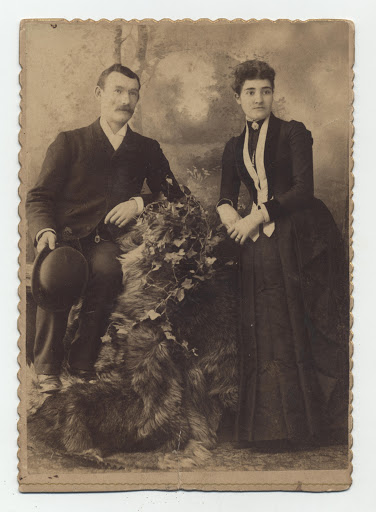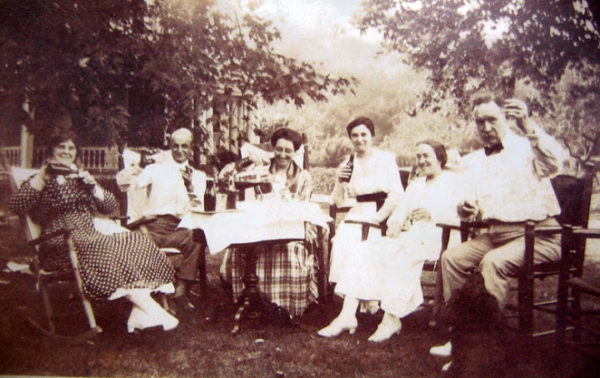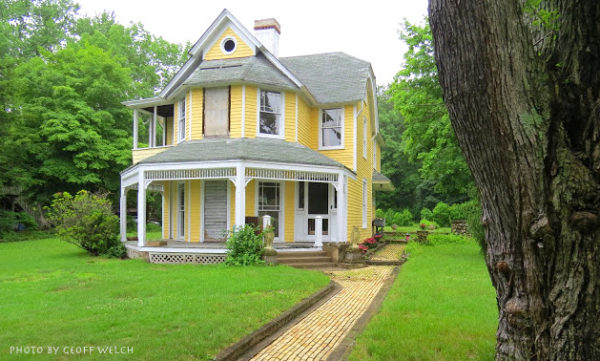
The Robert and Mary McCready House on Route 17 in north Sloatsburg, also known as Westwind, was built in 1889 and is currently being restored to its former prominence by Edward Marse. The home is listed on the New York and National Registers of Historic Places, only the 3rd Sloatsburg residence to be listed.
Sloatsburger Ed Marse has nearly always had an interest in antiques and local history. Marse often visited the old Blue Barn Antiques while growing up, searching through the many valuables stored in the 70 foot long former livery barn on the Waldron property — currently under renovation by Michael Bruno and the Tuxedo Hudson Company.
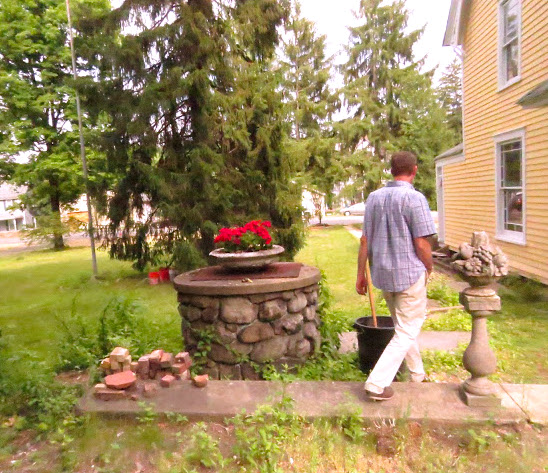
Ed Marse walks near the property’s well, an original McCready feature to the house. Photo by Geoff Welch
Marse still recalls the cluster of historic homes that once ringed the Village center from Mill Street to Rhodes North Tavern. As a former Friends of Harmony Hall board member, he was active in revealing significant architectural and historical details of the old Jacob Sloat House, which is now listed on the NYS and National Registry of Historic Places, Marse had his eye on his own piece of Sloatsburg history.
Marse purchased the old McCready House along Route 17, an eclectic mix of Late Victorian architecture, an historically significant property with three buildings known as Westwind built in 1889 as a wedding gift to McCready’s new bride Mary. The house was suffering distress after years of tenants’ abuse as a local rental property. Marse set out to restore the home’s former luster, including plaster work, flooring and carpentry.
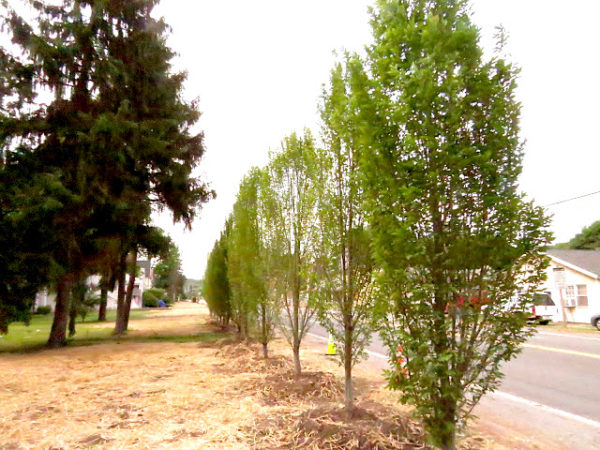
After sewer construction damaged trees on the property, Marse recently planted 14 spear-shaped English Hornbeam trees that now form a stately border along Route 17.
Perhaps one of the property’s most significant feature is an yellow brick walkway that runs from Route 17 to the house’s front porch and along the side and to the back of the house, which was added by McCready.
Currently a member of the Sloatsburg Revitalization Committee, Marse worked with the Sloatsburg Historical Society to get Westwind listed on the New York and National Registers of Historic Places — the marker design and message is being finalized. Along with the Sloat House & Inn (Steven Sloat’s house built circa 1754) and the Jacob Sloat House (Harmony Hall built 1864), Marse’s McCready House is now only the third Sloatsburg home designated by the registry.
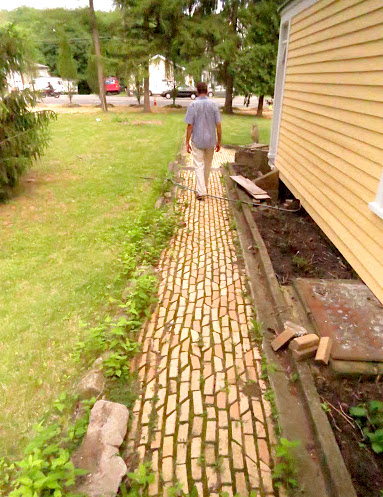
Ed Marse continues along the McCready property’s yellow brick walk, added by Robert McCready, who lived in the house with his wife Mary until they both died in 1949 — she in April and he the following fall. Photo by Geoff Welch
The designation effort has led Marse to restore Westwind’s front lawn charm along Route 17’s highway corridor. This past Saturday, June 4, 14 spear-shaped English Hornbeam trees were planted across the front of his property, forming a stately border on the route of what was known in the 17th century as the Old Clove Road, which wound through the Ramapo Pass.
“The common English name “hornbeam” derives from the hardness of the woods (likened to horn) and the Old English “beam”.
Robert and Mary McCready and Westwind
Born in Belfast, Ireland, Robert Workman McCready came to America “with a tool box under one arm and a five pound note in his pocket,” according to his great grand-daughter. That all changed after McCready made his way to Sloatsburg. He helped with the construction of the United Methodist Church in Sloatsburg in 1887 to replace an earlier edifice and soon found himself working in the construction firm of Mead & Taft out of Cornwall, NY, which built early dwellings in Tuxedo Park and was responsible for executing work for the architectural office of McKim, Mead & White.Sloatsburgers Robert and Mary McCready
McCready joined with his brother-in-law Robert Finch to form the contracting firm McCready & Finch and from 1897- 1903 built many of the homes in Tuxedo Park — the firm continued from 1901 to 1925 under the Robert McCready name. The firm also contracted to build the Harriman family barns or coach house at the Arden Estate. McCready’s prominence in the development of Tuxedo Park’s architecture was noted in a period obituary, which cited him as a “pioneer in the development.”
The long brick building across from Taverna/Tuxedo Junction in Tuxedo was also built by McCready and locally known as the “McCready Building.”
McCready and his wife Mary were very visible members of the Sloatsburg community, employing many people in the area throughout the years and involved in any number of charitable works.
Lawn party at the McCready House with Robert and Mary McCready and guests. Photo not dated.
The McCready’s built Westwind as their private home in 1889 as a wedding gift from Robert to Mary and lived there until their deaths in 1949. Westwind contained the main house, a Bungalow built in 1930 as a rental property, the carriage barn, and includes features such as a brick and concrete walkway, the koi pond, fountain, a hand-pump and well, and stone and concrete retaining wall.
Between the main house and bungalow is situated a brick-lined koi pond, and a fountain with cast-concrete benches and stone and brick elements — the pond and fountain are set within a circular drive that remains as a feature of the property.
Robert McCready was a member of the Masonic Order, Knights Templar and of the Shrine, and was also a charter member of Lorillard Lodge 858 of Tuxedo, NY.
Geoff Welch contributed to this article.


